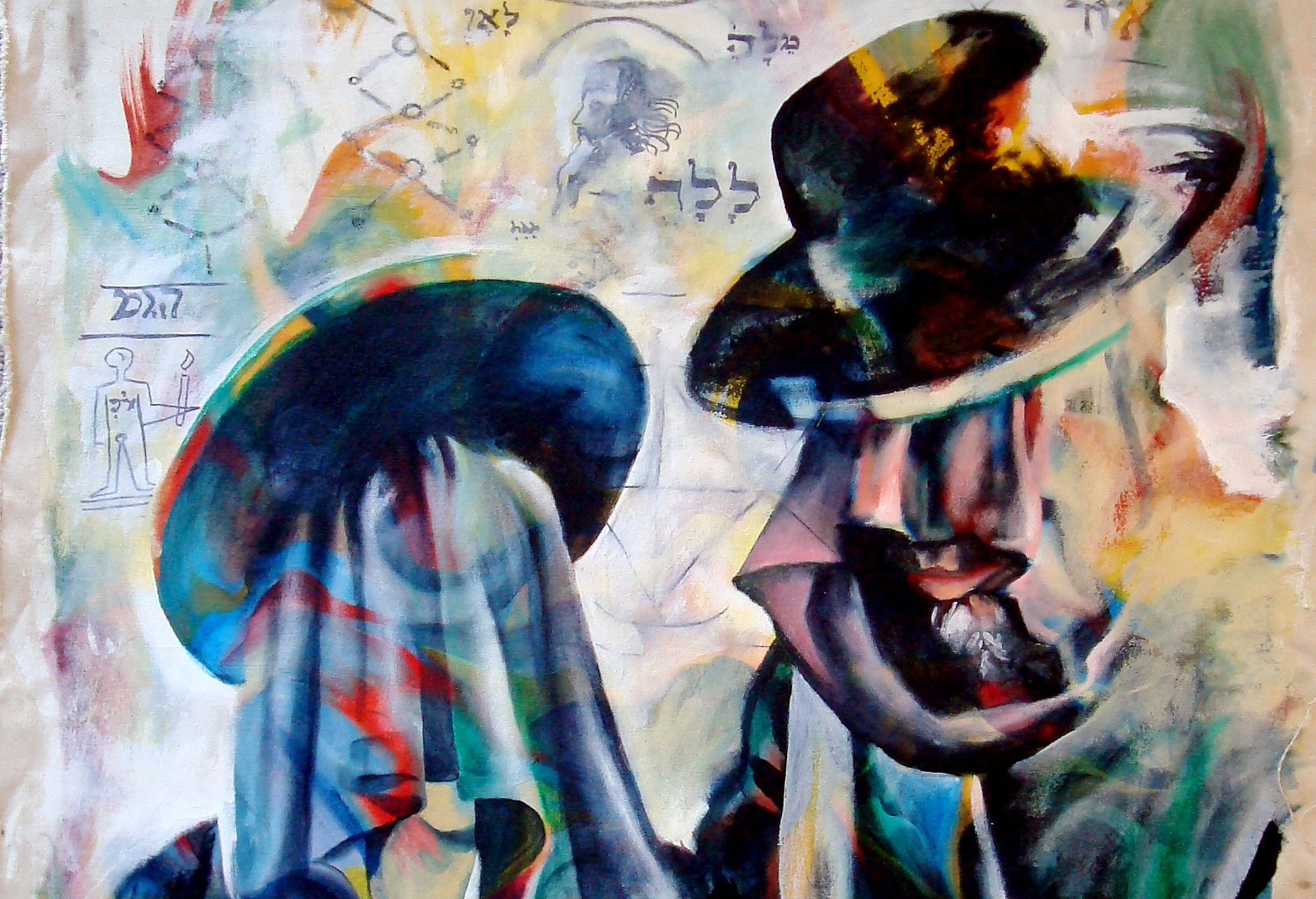Alumnus Khalid Hussein collaborates with Noah Haytin in “Hybrids” to explore Middle Eastern and American identities

“Hitbodedut” is a multimedia work by UCLA alumnus Khalid Hussein. This piece is on display at the Levantine Cultural Center as part of the “Hybrids” exhibition.
Courtesy of KHALID HUSSEIN
HYBRIDS
Through Feb. 28
Levantine Cultural Center, FREE
By Andrea Wang
Jan. 31, 2011 2:17 a.m.
Friday evening, the Levantine Cultural Center seemed to be the only source of life on West Pico Boulevard. While the rest of the shops lay quiet, conversation and light came from the center’s large windows.
The Levantine Cultural Center occupies a modest space, changing to accommodate different events. Right now it’s transformed into the Inside/Outside Gallery, displaying the artworks of Noah Haytin and UCLA alumnus Khalid Hussein. Here, most dialogue revolves around the Middle East and North America.
“Hybrids,” an exhibition which will be on display through Feb. 28, explores Middle Eastern and American identities. Compositions often mesh imagery from both cultures, resulting in colorful pieces with political and religious undertones. Haytin’s works are delicate, using inks, thin lines and purposeful paper clippings. These are displayed between Hussein’s canvases, which have soaked up layers of acrylics and oils.
“We intermixed the work because we felt that this isn’t my show or his show, this is our show. … This show is a hybrid of both of our works,” Haytin said.
Jordan Elgrably, the exhibition’s curator, paired Haytin and Hussein.
“This was a hybrid show, because both of the artists are a mix of this and that,” Elgrably said.
Hussein explained his complex heritage. His Muslim Egyptian father came to the United States and met his mother, a Swedish-Norwegian American with a Lutheran Christian upbringing.
Hussein said he recalls moving to different countries about every four years while growing up. Born in Saudi Arabia and later relocating to the Midwest, Hussein then moved to Egypt before going high school in California.
“When I first went to the Middle East and lived there for a while, I was young, so the things I missed were Skippy peanut butter and Ninja Turtles.
That, for me, was America,” Hussein said.
According to Hussein, changing homes so frequently also required assimilating. He had to learn new slang to keep up.
“You know, the first time someone said to me, “˜Are you a player?’ I was like, “˜What game are you referring to?'” Hussein said.
Hussein said that traveling has made him both a stranger to and a participant in many traditions.
“My experience of the world has been created from travel and a combination of different places and cultures, and also feeling like I exist not necessarily fully within any of them,” Hussein said.
Hussein said that growing up with mixed allegiances and ideas requires a strong sense of identity, something he questions in his artwork.
Hussein paints layered images on top of one another, exposing only hints of what used to be there: a hijab or outlines of a chair. While this seems time-consuming, he maintains that everything he adds to his compositions has meaning.
“If you can get it in one brushstroke, then there’s no need for two,” Hussein said.
Hussein plays with ideas of memory and memory loss, fading faces into swaths of bright colors, text and cityscapes.
The opening exhibition drew in a crowd of all ages. Toddlers with Velcro sneakers grabbed free brownies as their mothers leaned in to look at details. College students conversed as grandfathers navigated the exhibit.
Elgrably is also the director of the Levantine Cultural Center.
“The Middle East is like a mosaic. … We try to show the diversity, the mix.” Elgrably said.


